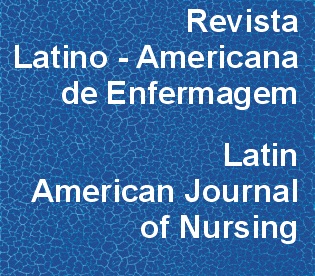Presenteeism and musculoskeletal symptoms among nursing professionals
DOI:
https://doi.org/10.1590/1518-8345.2185.3006Keywords:
Cumulative Trauma Disorders, Efficiency, Presenteeism, Occupational Health, Nursing, WorkAbstract
Objective: to identify the prevalence of musculoskeletal symptoms in two stages (before and after six months of the first stage) and its association with presenteeism among nursing professionals. Method: longitudinal study with quantitative data conducted in a Brazilian teaching hospital with 211 nursing professionals. The instruments used for data collection were: Cultural and Psychosocial Influences on Disability - CUPID Questionnaire, used to identify the musculoskeletal symptoms and the Stanford Presenteeism Scale, used to verify presenteeism. The instruments were validated for Brazilian Portuguese. The study was approved by the Human Research Ethics Committee. Descriptive statistics, Mann Whitney test and regression analysis were used to analyze the data. Results: 158 (74.9%) professionals experienced presenteeism and 151 (71.6%) reported low back pain as musculoskeletal symptom. Professionals with low back pain had lower scores on the presenteeism scale and shoulder pain was related to loss of concentration during work. Conclusion: presenteeism lead to a reduction in work performance and was manifested in the presence of musculoskeletal symptoms. In addition, shoulder pain caused loss of concentration at work.Downloads
Download data is not yet available.
Downloads
Published
2018-01-01
Issue
Section
Original Articles
License
RLAE’s authorship concept is based on the substantial contribution by each of the individuals listed as authors, mainly in terms of conceiving and planning the research project, collecting or analyzing and interpreting data, writing and critical review. Indication of authors’ names under the article title is limited to six. If more, authors are listed on the online submission form under Acknowledgements. The possibility of including more than six authors will only be examined on multicenter studies, considering the explanations presented by the authors.Including names of authors whose contribution does not fit into the above criteria cannot be justified. Those names can be included in the Acknowledgements section.
Authors are fully responsible for the concepts disseminated in their manuscripts, which do not necessarily reflect the editors’ and editorial board’s opinion.
How to Cite
Santos, H. E. C. dos, Marziale, M. H. P., & Felli, V. E. A. (2018). Presenteeism and musculoskeletal symptoms among nursing professionals. Revista Latino-Americana De Enfermagem, 26, e3006. https://doi.org/10.1590/1518-8345.2185.3006



